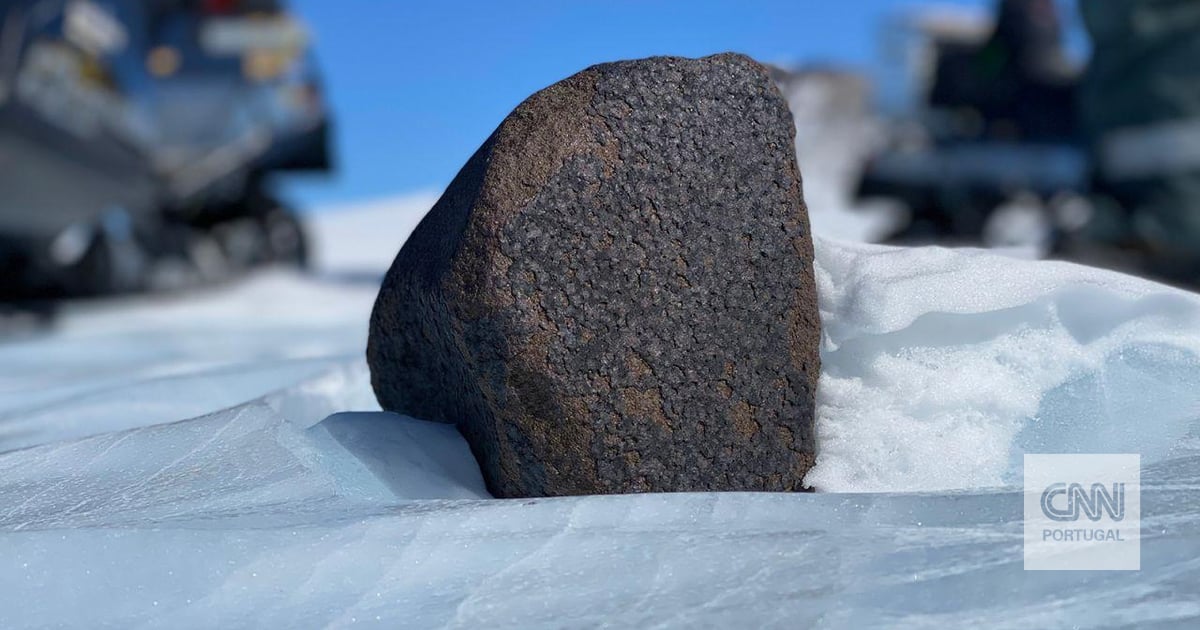During a recent excursion to the icy plains of Antarctica, an international team of researchers discovered five new meteorites – including one of the largest ever discovered on that continent.
The rare meteorite is about the size of a cantaloupe but weighs 7.7 kilograms. It is one of around 100 of that size or larger discovered in Antarctica, a prime location for meteorite hunting where more than 45,000 space rocks have been found.
Now, the exceptional discovery is headed to the Royal Belgian Institute of Natural Sciences in Brussels, where it will be studied. And Maria Valdes, a researcher at the Field Museum of Natural History in Chicago and the University of Chicago, who was part of the expedition, kept part of the material for her own analysis.
Valdes’ area of focus is cosmochemistry. This “means, broadly speaking, that we use meteorites to study the origin and evolution of the solar system through chemical methods,” he told CNN. The scientist will use acids to dissolve the samples before using a process called calibration to isolate various elements that make up the rock.
“Then I can start thinking about where this rock came from, how it evolved over time, what kind of parent body it came from, and where in the solar system that parent body formed. These are some of the big questions we try to address,” explained.
About the ‘hunt’
Meteorites hit the Earth over its entire surface, so Antarctica doesn’t have a large concentration, Valdes noted. But the pure white ice is an ideal backdrop for spotting the black rocks.
The ‘hunt’ for meteoroids [que dão origem aos meteoritos quando entram na atmosfera] it is, “really, low-tech and less complicated than people might think,” Valdes revealed. “Or we walk around on foot or on a snowmobile, looking at the surface.”
From left to right of the photo: Maria Schönbächler, Ryoga Maeda, Vinciane Debaille and Maria Valdes. Courtesy: Maria Valdes
But the team had an idea of where to look. One study carried out in January 2022 used satellite data to help narrow down the most likely places to find meteorites.
“The meteorites themselves are too small to be detected from space with satellites”, underlined Valdes. “But this study used satellite measurements of surface temperature, surface tilt, surface velocity, ice thickness – things like that. And it linked the data to an algorithm to tell us where the most likely to find meteorite accumulation zones are.” .”
Distinguishing a meteorite from other rocks can be a tricky process, Valdes noted. The researchers are looking for the fusion crust, a glassy coating that forms as the cosmic object speeds through Earth’s atmosphere.
“Many rocks may look like meteorites, but they are not,” he said.
Another distinguishing feature is the weight of the sample. A meteorite is much heavier than a terrestrial rock of the same size because it is packed with dense metals.
The conditions the researchers endured in the field were grueling. Although Valdes and three other scientists carried out their mission during the continent’s “summer”, with 24 hours of daylight, temperatures still hovered around -10ºC, according to a statement from the Field Museum.
The research team spent about a week and a half with a guide, living in tents set up on the icy terrain. However, Valdes said that she and her colleagues also spent time at a Belgian research station near the coast of Antarctica, where they enjoyed hot meals and even cheese fondue.
When it comes to research, the good news, added Valdes, is that the five meteorites she and her colleagues discovered on this expedition are just the tip of the iceberg.
“I’m looking forward to going back. According to the study, there are at least 300,000 meteorites waiting to be collected in Antarctica. And the more samples we have, the better we can understand our solar system”, he said.
The tour was led by Vinciane Debaille, a professor at the Université Libre de Bruxelles in Brussels. In addition to Maria Valdes, Maria Schönbächler, professor at the Eidgenössische Technische Hochschule in Zurich, and PhD student Ryoga Maeda from the Vrije Universiteit Brussel and the Université Libre de Bruxelles participated.


